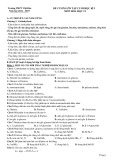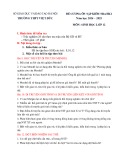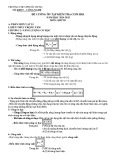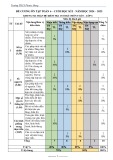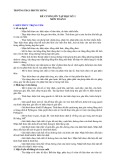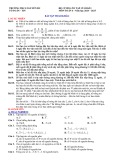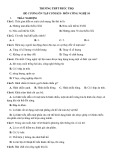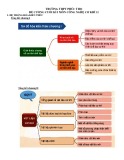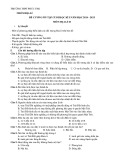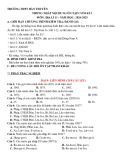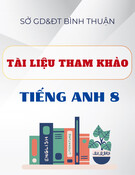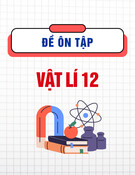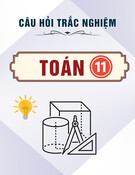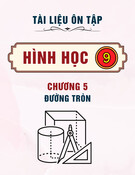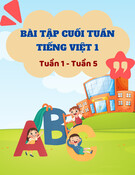
Sở GD &ĐT Hà Nội
ĐỀ CƯƠNG ÔN TẬP HỌC KỲ I
NĂM HỌC 2024-2025
Trường THPT Bắc Thăng Long
MÔN TIẾNG ANH LỚP 12
A.MỤC ĐÍCH YÊU CẦU.
* Giúp học sinh hệ thống lại kiến thức môn tiếng Anh lớp 12 học kỳ I bao gồm chủ yếu bài 3,4,5, ôn lại
từ vựng và các chủ điểm ngữ pháp trong bài 3,4,5
* Yêu cầu học sinh nắm vững kiến thức chủ yếu trong từng đơn vị bài học và một số cấu chúc ngữ pháp
đã được học trong bài 3,4,5.
*nắm vững từ vựng hiểu nghĩa các từ đó và cách sử dụng trong ngôn ngữ tiếng Việt.
* Hiểu được dạng thức thi theo CTGDPT 2018 từ đó phát triển năng lực theo dạng đề thi QG mới nhất.
PRACTICE
Read the following advertisement and mark the letter A, B, C or D on your answer sheet to indicate
the correct option that best fits each of the numbered blanks.
When holiday season is in full swing, sometimes the last thing you think about as a college student
is finding a job. If you need to (1) __________ some extra money, finding holiday jobs for students has
never been easier.
When I was in college, I was able to take advantage of summer vacations to pick up a part-time job
at a local company. In fact, the month long (2) _________ between semesters was a perfect chance to work
hard and earn some extra spending money to get me (3) _________ the next semester at school.
College students are perfectly situated to make the most of the holiday employment boost. Most holiday
jobs are in the retail sector, (4) ________ allows for flexible hours. When school work tapers off, you can
pick up more hours to make more money. (5) _________, the competition between retailers benefits those
looking (6) _______ holiday jobs. They will typically offer better pay, benefits, and overtime opportunities.
You could also use a temporary seasonal job to get your foot in the door with a company you could work
with long term when you go back to school.
1. A. do B. make C. take D. gain
2. A. break B. term C. period D. duration
3. A. on B. over C. during D. through
4. A. what B. that C. when D. which
5. A. Therefore B. As a result C. Moreover D. However
6. A. for B after C. at D. into
Read the following advertisement and mark the letter A, B, C or D on your answer sheet to indicate
the correct option that best fits each of the numbered blanks.
WHY WE PROTECT WILDLIFE
Animals and plants are not just valuable for their own sake. They are also part of a wider (1)______
environment that may provide food, shelter, water, and other functions, for other (2) and people.
With so much wildlife at (3) , the question people often ask us is how we decide
which animals and plants to focus (4) conservation efforts and funds on. Well, it's not always an
easy decision. However, World Wildlife Fund has (5) up a list of criteria to guide their actions.
Some of their considerations are: 1) Is it a species that is a vital part of a food chain?; 2) Is it a species
that (6) demonstrate broader conservation needs?; or 3) is it an important cultural icon that
will collect support for wildlife conservation as a whole?.
(Text adapted from https://www.wwf.org.uk/what-we-do/area-of-work/protecting-wildlife)
1. A. forest B. nature C. natural D. useful
2. A. plants B. wildlife C. lives D. human
3. A. risk B. difficulty C. first D. importance
4. A. us B. them C. their D. our
5. A. set B. provide C. offer D. wake
6. A. help B. helped C. to help D. helps
Mark the letter A, B, c, or D on your answer sheet to indicate the correct option that best fits each
of the numbered blanks







